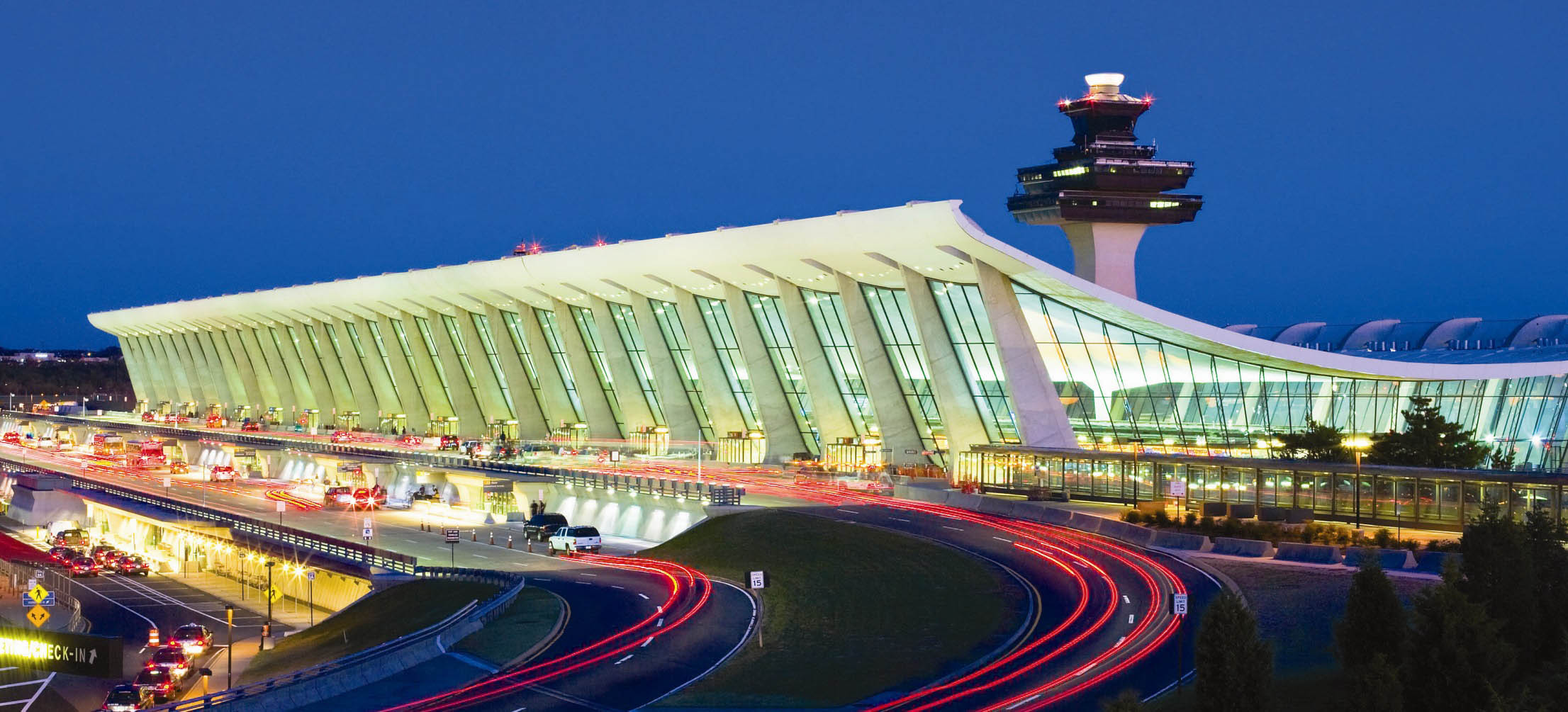Washington Dulles International Airport (IAD) has been my home airport for the past 15 years. So, when the airport authority made its decision on the location of the Metro Rail station, it prompted me to write down my thoughts on it.

Dulles Main Terminal - Courtesy: Metropolitan Washington Airports Authority
Dulles used to be one of the most derided major airports in the United States. Located 23 miles West of downtown Washington, it was considered as a white elephant when opened in 1962. Most flights to the nation’s capital operated out of the close-in National Airport (since then renamed as Ronald Reagan Washington National Airport). With a signature Main Terminal, designed by the famous Finnish American Architect Eero Saarinen (who also designed the famous Gateway Arch in St. Louis and the futuristic TWA terminal in New York’s JFK airport), Dulles has one more unique feature: the mobile lounges. These odd looking vehicles transport passengers between terminals and planes.
Dulles has come a long way. A Perimeter Rule was put in place by the US Congress prohibiting long distance flights from National. The Washington DC area expanded rapidly and Northern Virginia became a hotbed for technology companies and government contractors. Dulles has become the busiest airport in the region, outpacing National and Baltimore Washington International. It is one of the major international gateways in the country today with United Airlines operating a major hub.
The major renovation programs in Dulles have helped it improve the standing among passengers. The recently launched AeroTrain connects the main terminal with all Concourses except Concourse D. I thoroughly enjoyed it on my recent trip to India. Even though the mobile lounges are still used to transport arriving international passengers, the train covers majority of the departing passengers. The redesigned Concourse B is also an excellent facility where most international airlines operate. But Concourses C and D are a different story. It is a shame that United has to operate its hub out of these outdated facilities. The airport authority and United have indefinitely shelved the plan to replace these facilities. Hopefully, a day will come to sunset these old structures.
The final piece of the puzzle is the metro rail access to the airport. Construction of Phase 1 is in progress. Phase 2 will bring the rail to the airport. The contentious question is the location of the airport station. With soaring costs, the original plan to build the station right under the main terminal was rejected. Two alternative proposals were put forth: an underground station closer to the main terminal and an above ground station farther away from the main terminal. The airport authority was right in selecting the underground station. This is more convenient to passengers with much shorter distance to cover than the above ground station. I know it is going to cost more. But, the long term vision of more user friendly station should be given preference over the short term, cheaper alternative that is not user friendly. I remember that when the Metro opened the station in Reagan National Airport, I avoided using it to the airport because my flights departed from Terminal A, which is a long walk (or take a shuttle bus). When Terminal B/C opened and connected directly to the metro station using the covered walkway, it was more convenient. A longer walk to the Terminal from the station could deter the passenger from using the rail, especially in Dulles with lots of international passengers.
